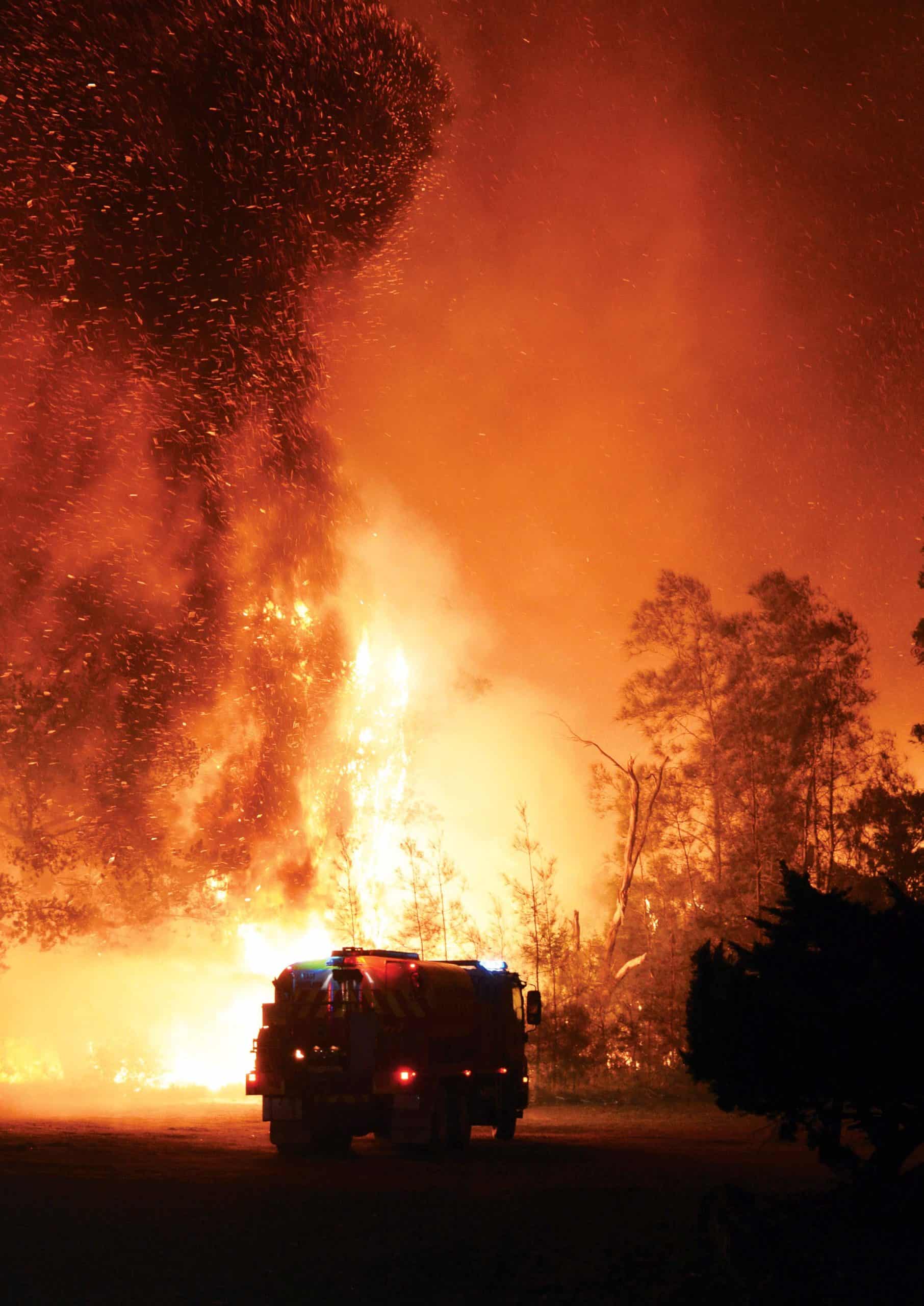Photos by Dean Turner
When we think about bushfire preparation, our first thoughts are usually about cleaning up around the house. But as we head towards what’s tipped to be a particularly hot summer, there’s plenty we can learn about preparing your home for bushfire season from people who have survived catastrophic bushfires.
The unseasonably warm and dry spring Australia just experienced has followed a triple La Niña weather event. The increase in rainfall during the last three summers has contributed to thick forest undergrowth which, as temperatures increase, is drying out.
There’s nothing we can do that will have any bearing on the extreme temperatures Australia is expecting this fire season, but there’s things we can do to prepare, and designs we can implement that can put you and your family on the front foot if the unthinkable happens in the future.
PROPERTY PLANNING
Planning is best done in advance. Tell that to your family as you sit them down to discuss the conditions in which you will choose to leave and in which conditions you’ll be prepared to stay if a fire is approaching your property.
It’s very likely there’ll be differing opinions when it comes to deciding when to walk away or stay to protect the home. To help with this task, today’s state fire apps provide useful decision matrixes – or what some people call ‘relationship savers’ – using the national fire danger ratings and warnings. They also take all of the guesswork out of monitoring a watch zone.
With your family, walk around your property and create a ‘blue and red map’, with the blue representing things like water taps and pumps, while red indicates flammable items such as fuel, paints or gas. By walking around and plotting your property, you will all notice the things that can burn that need clearing up and moving away.
While completing the map exercise, take note of materials your blue markings are made of. It’s great to have a tap located near the shed, for example, but if it’s mounted on a PVC pipe out of the ground, it’ll be useless to you in a fire if the riser pipe melts. And imagine if you lost the water supply to your house just because of one melted pipe at the edge of your property.
Once completed, put your map on the fridge where everyone can see it. And in the event of a fire threat, consider putting it in a reflective tube at the entrance to your property so it can be accessed and used in case someone turns up and needs to help out.
During the Black Summer fires, we learnt that everyone is busy, fire trucks are few, and if someone does turn up to help they’re generally not able to stay for long. A map like this will ensure the time they can spend will be used the most efficiently.
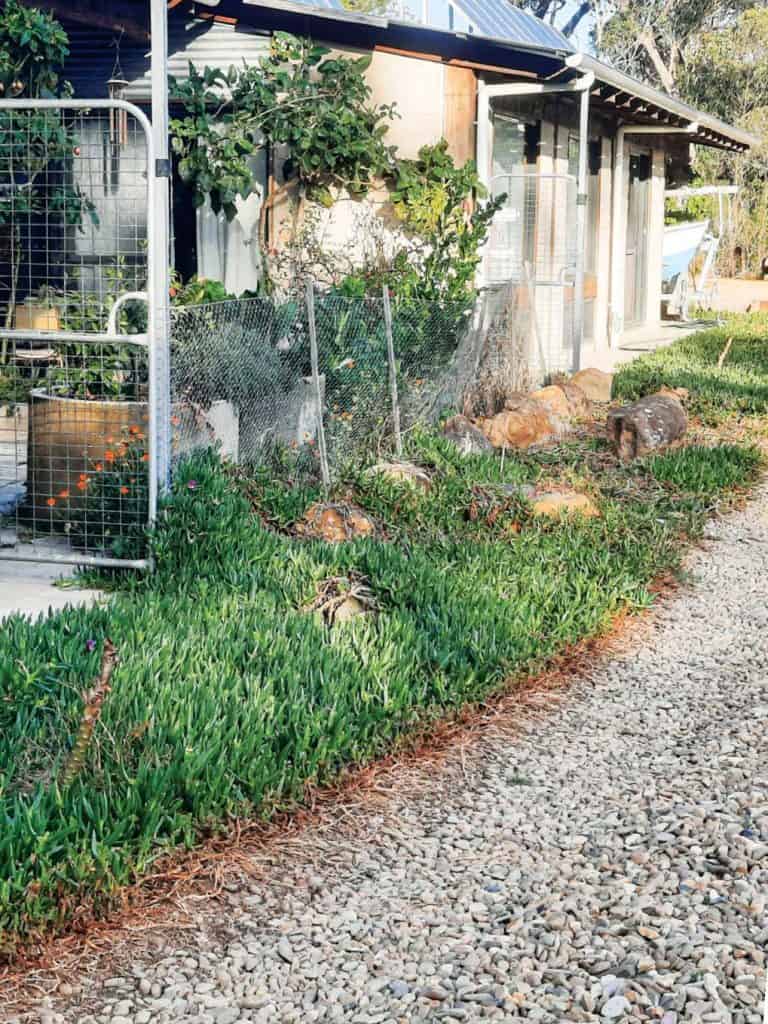

FORM AND FUNCTION
It’s a good idea to identify your property’s ‘hot side’ or ‘fire sector’. On the southeast coast of Australia, this is generally thought of as being where the hot northerly or north westerly winds arrive from the dry inland. While other winds can also sweep fire towards you, like the drying westerlies or even the cool southerly buster, it’s good to place things that are less likely to burn in the fire sector areas, while being mindful to have things that are more likely to burn away from these areas.
Here on the south coast, for example, we’re better off storing firewood to the south east where the moist cool winds come from, and putting a pool or dam to the north, northeast or west. Gardens and orchards which are watered regularly are also good in the fire sector as they can help to retard fire and reduce heat intensity.
FIRE RETARDANT PLANTS
If you live in an area prone to fire, you should look at incorporating fire-retardant shelterbelts. Plants alone won’t protect your property in extreme fire events, but well considered plantings used in a holistic approach to property design can help mitigate the risks.
The most effective fire-retardant plants will vary depending on where you live, and there are many free state-based resources available online, but the plants are more likely to have fleshy or leathery foliage, while ‘hairs’ on the leaf may also help with retardancy due to the increased presence of silica.
And while the online lists are largely a free resource, if you have the opportunity to make a donation to the organisation who compiled your list – or your local CFA or bushfire recovery organisation – doing so before the fact may reap better outcomes.
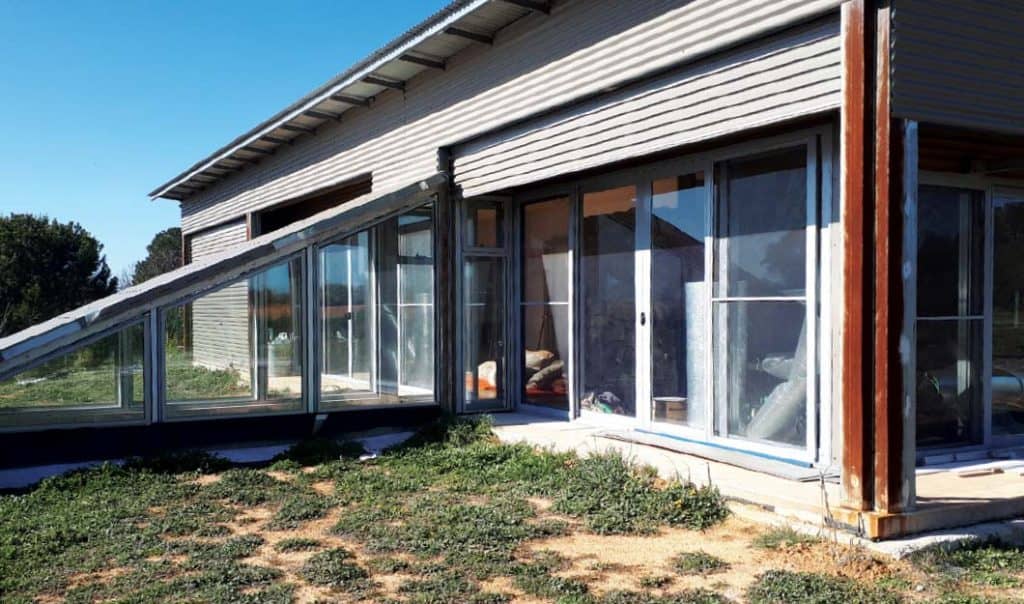

BE WARY OF WIND
As well as moving fire towards you at an alarming rate, wind can carry a surprising amount of radiant heat which reduces the ability to fight fires. If you live on a larger property, it’s a very good idea to plant a fire-retardant shelterbelt of trees and shrubs that can also assist with slowing windspeed. For it to be most effective, it must be a well watered with planning in place to provide supplementary watering in dry times. Better still, you could use swales to capture and direct water where it’s needed to help maintain high water content in your foliage. Cross ripping is also another effective technique to improve water uptake and root penetration of the soils prior to planting.
There are a lot of factors to consider in good windbreak design. It takes planning and knowledge of wind and pressure effects. The key is in the word – you want to break the wind rather than stop it completely. If any windbreak is too solid you can unwittingly create highly turbulent and destructive wind areas beyond the shelterbelt. Far better results and larger areas of wind protection are obtained when around 50 percent of the wind is blocked, while the rest is slowed and cooled as it passes through.
Between your shelterbelt and buildings, there could be well-irrigated gardens, orchards, a body of water or even a well-watered lawn for the wind to cross and be cooled even further. Consider using wire mesh instead of plastic netting for enclosures to protect edible plants which could further hinder embers. Avoid using anything flammable really close to the house. Good design would see things like succulents and stone – think a pigface ‘lawn’ and a stone driveway as clever fire-retardant landscape design.
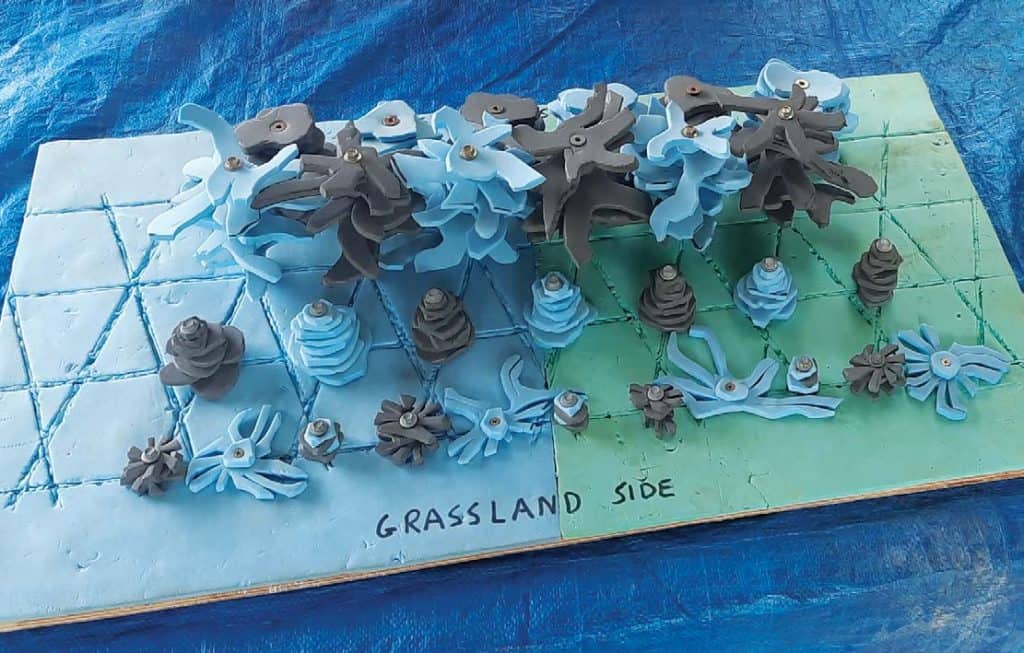

WATER IS KEY
Increasing your water-holding capacity through a tank or dam will never be a decision you regret if fire hits. Using swales and terraces, it’s a very good idea to ‘zig zag’ as much water as you can from the top of your property to the bottom, as it will ensure your soils remain damp for longer.
Often a driveway is a good opportunity to capture water and send it off perpendicularly, again using drains and swales – no sense letting water just run away from your property back down the drive.
If you live in a town when a fire threatens, it’s important to know your water pressure can drop dramatically as more taps are turned on or if power fails. Worse, if the main pressure tank has a plastic connection above ground and it melts when the fire arrives, you’ll have no access to water at all. While many plastic and metal tanks ruptured in the worst of the fires, stainless-steel and the concrete tanks were reported to be relatively reliable during the Black Summer fires.
Pumps and their power supply can fail so, where possible, try and store a good quantity of water high on your property. And make sure you bury plastic pipes deeper than a spade depth – the Black Summer fires burned so hot that even some underground pipes melted.
Most houses threatened by bushfire catch alight when gutters full of leaves burn through the timber facia boards, so having methods to quickly block and fill your gutters with water is one of the most effective ways to protect your house.
Installing an internal hose connection in a wet area of your house like the laundry can be useful, and when the threat of fire arrives so is having a collection of full buckets. Sprinklers are also useful. Turn your fine, misting sprinklers inward on your verandahs and decks and use the more powerful sprinklers outside and above to continually wet your roof, gutters and the area around your house.
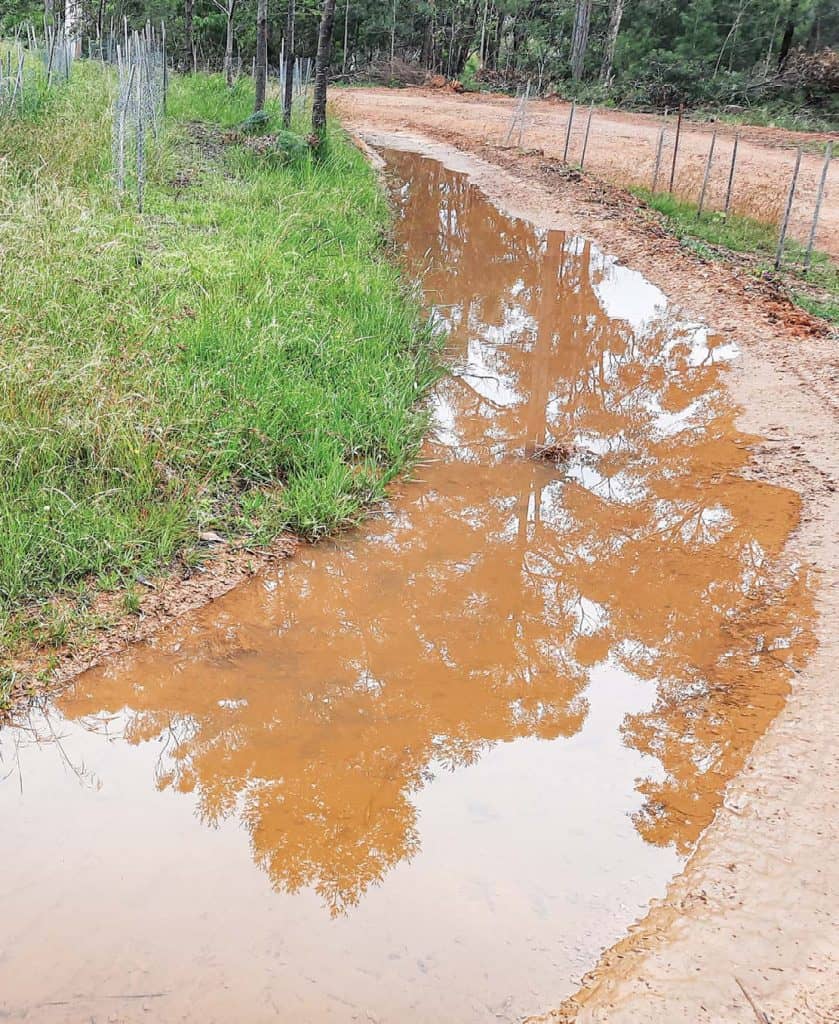

PHYSICAL BARRIERS
After gutters, the next most likely place a fire will access your home is through broken windows, either as a result of radiant heat or wayward debris. Stainless steel flyscreens can improve window protection and reduce heat on the glass, while double glazing and metal shutters will up your protection – but also the cost.
Identify your risk and do your research. Some thick metal shutters may provide impenetrable protection, but could need electric motors to actuate, so if power is lost you will need back-up power like a generator. Ensure generators are well maintained – they’re easy to forget about when you don’t need them, but a flat battery or stale fuel can thwart even the best-laid plans.
During the Black Summer fires, many people believed shipping containers would be fireproof, but the small gap underneath and their timber floors proved them wrong. If you can stop flames or embers gaining access to areas, you’re halfway there.


PERSONAL PROTECTION
Being prepared will not only help you enormously in the event of a fire, it’ll keep you calm and help you to make well-considered decisions. Having an emergency bag is a big part of fire preparedness and something every Australian household should have regardless of where it’s situated.
As well as the basic items every emergency bag should contain (see breakout), you should consider including cotton firefighting overalls or woollen clothing, sturdy boots and gloves, a helmet or wool beanie and a full facemask (with silica around the face) with N95 filters – it’s critical to protect your hands, face and ability to breathe during a fire.
If you need to fight a fire or stop to clear a fallen tree while trying to evacuate, you’ll be far safer. Depending on where you live and your skills, you throw a saw (hand, fuel or battery operated) and an axe in your vehicle. Evacuating earlier is always safer but fallen trees or a flat tyre can happen to anyone, so if you have two vehicles why not travel out together so you have a back-up.
If mobile towers are damaged, there’s tech you can put in place such as satellite internet powered by remote solar, but at the very least good-quality waterproof walkie-talkies will prove invaluable. Even these have come a long way; you can buy waterproof units now which allow you to listen to two channels at once – your road channel and your local fire emergency channel, for instance, as well as having a radio function to stay across alerts and weather updates.
SUMMARY
As well as creating a more fire-retardant home and landscape through whole-site planning, our social designs are just as important. Deciding and communicating back- up strategies and evacuation criteria and plans before an emergency situation arises is key to ensuring you emerge from a fire in the best possible condition.
It’s rare to have time to decide on, read or even relay important instructions during an emergency, so good design and clear planning can make all the difference.
Basic emergency bag
EVERY AUSTRALIAN HOUSEHOLD SHOULD HAVE AN EMERGENCY BAG PACKED THIS SUMMER


Woollen blanket
Water
Documents (passports, ID, bills)
Radio and batteries
Cash
Leather gloves
Hard drive (photos, files, documents, etc.)
Power bank
Charging leads
Torches
Non-perishable food
Pet lead and food (if applicable)
Underwear & toiletries
Toilet paper/tissues

